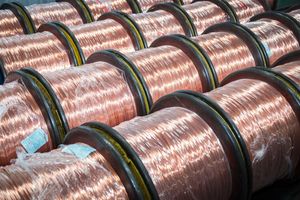
The artificial intelligence revolution is not just changing how we interact with technology; it's fundamentally reshaping the global semiconductor industry, driving unprecedented demand for specialized chips and igniting a furious pace of innovation. As of October 3, 2025, the "AI supercycle" is in full swing, transforming market valuations, dictating strategic investments, and creating a new frontier of opportunities for chip designers, manufacturers, and software developers alike. This symbiotic relationship, where AI demands more powerful silicon and simultaneously accelerates its creation, marks a pivotal moment in the history of technology.
The immediate significance of this transformation is evident in the staggering growth projections for the AI chip market, which is expected to surge from approximately $83.80 billion in 2025 to an estimated $459.00 billion by 2032. This explosion in demand, primarily fueled by the proliferation of generative AI, large language models (LLMs), and edge AI applications, is propelling semiconductors to the forefront of global strategic assets. Companies are locked in an "infrastructure arms race" to build AI-ready data centers, while the quest for more efficient and powerful processing units is pushing the boundaries of what's possible in chip design and manufacturing.
Architecting Intelligence: The Technical Revolution in Silicon
The core of AI's transformative impact lies in its demand for entirely new chip architectures and advanced manufacturing techniques. Traditional CPU designs, while versatile, are often bottlenecks for the parallel processing required by modern AI algorithms. This has led to the dominance and rapid evolution of specialized processors.
Graphics Processing Units (GPUs), spearheaded by companies like NVIDIA (NASDAQ: NVDA), have become the workhorses of AI training, leveraging their massive parallel processing capabilities. NVIDIA's data center GPU sales have seen exponential growth, illustrating their indispensable role in training complex AI models. However, the innovation doesn't stop there. Application-Specific Integrated Circuits (ASICs), such as Google's (NASDAQ: GOOGL) Tensor Processing Units (TPUs), are custom-designed for specific AI workloads, offering unparalleled efficiency for particular tasks. Concurrently, Neural Processing Units (NPUs) are becoming standard in consumer devices like smartphones and laptops, enabling real-time, low-latency AI inference at the edge.
Beyond these established architectures, AI is driving research into truly novel approaches. Neuromorphic computing, inspired by the human brain, offers drastic energy efficiency improvements for specific AI inference tasks, with chips like Intel's (NASDAQ: INTC) Loihi 2 demonstrating up to 1000x greater efficiency compared to traditional GPUs for certain operations. Optical AI chips, which use light instead of electricity for data transmission, promise faster and even more energy-efficient AI computations. Furthermore, the advent of AI is revolutionizing chip design itself, with AI-driven Electronic Design Automation (EDA) tools automating complex tasks, significantly reducing design cycles—for example, from six months to six weeks for a 5nm chip—and improving overall design quality.
Crucially, as traditional Moore's Law scaling faces physical limits, advanced packaging technologies have become paramount. 2.5D and 3D packaging integrate multiple components, such as GPUs, AI ASICs, and High Bandwidth Memory (HBM), into a single package, dramatically reducing latency and improving power efficiency. The modular approach of chiplets, combined through advanced packaging, allows for cost-effective scaling and customized solutions, enabling chip designers to mix and match specialized components for diverse AI applications. These innovations collectively represent a fundamental departure from previous approaches, prioritizing parallel processing, energy efficiency, and modularity to meet the escalating demands of AI.
The AI Gold Rush: Corporate Beneficiaries and Competitive Shifts
The AI-driven semiconductor boom has created a new hierarchy of beneficiaries and intensified competition across the tech industry. Companies that design, manufacture, and integrate these advanced chips are experiencing unprecedented growth and strategic advantages.
NVIDIA (NASDAQ: NVDA) stands as a prime example, dominating the AI accelerator market with its powerful GPUs and comprehensive software ecosystem (CUDA). Its market capitalization has soared, reflecting its critical role in enabling the current wave of AI advancements. However, major tech giants are not content to rely solely on third-party suppliers. Google (NASDAQ: GOOGL) with its TPUs, Apple (NASDAQ: AAPL) with its custom silicon for iPhones and Macs, and Microsoft (NASDAQ: MSFT) with its increasing investment in custom AI chips, are all developing in-house solutions to reduce costs, optimize performance, and gain greater control over their AI infrastructure. This trend signifies a broader strategic shift towards vertical integration in the AI era.
Traditional chipmakers like AMD (NASDAQ: AMD) and Intel (NASDAQ: INTC) are also making significant strides, heavily investing in their own AI chip portfolios and software stacks to compete in this lucrative market. AMD's Instinct accelerators are gaining traction in data centers, while Intel is pushing its Gaudi accelerators and neuromorphic computing initiatives. The competitive implications are immense: companies with superior AI hardware and software integration will hold a significant advantage in deploying and scaling AI services. This dynamic is disrupting existing product lines, forcing companies to rapidly innovate or risk falling behind. Startups focusing on niche AI hardware, specialized accelerators, or innovative cooling solutions are also attracting substantial investment, aiming to carve out their own segments in this rapidly expanding market.
A New Industrial Revolution: Wider Significance and Global Implications
The AI-driven transformation of the semiconductor industry is more than just a technological upgrade; it represents a new industrial revolution with profound wider significance, impacting global economics, geopolitics, and societal trends. This "AI supercycle" is comparable in scale and impact to the internet boom or the advent of mobile computing, fundamentally altering how industries operate and how nations compete.
The sheer computational power required for AI, particularly for training massive foundation models, has led to an unprecedented increase in energy consumption. Powerful AI chips, some consuming up to 700 watts, pose significant challenges for data centers in terms of energy costs and sustainability, driving intense efforts toward more energy-efficient designs and advanced cooling solutions like microfluidics. This concern highlights a critical tension between technological advancement and environmental responsibility, pushing for innovation in both hardware and infrastructure.
Geopolitically, the concentration of advanced chip manufacturing, primarily in Asia, has become a focal point of international tensions. The strategic importance of semiconductors for national security and economic competitiveness has led to increased government intervention, trade restrictions, and initiatives like the CHIPS Act in the U.S. and similar efforts in Europe, aimed at boosting domestic production capabilities. This has added layers of complexity to global supply chains and manufacturing strategies. The current landscape also raises ethical concerns around the accessibility and control of powerful AI hardware, potentially exacerbating the digital divide and concentrating AI capabilities in the hands of a few dominant players. Comparisons to previous AI milestones, such as the rise of deep learning or the AlphaGo victory, reveal that while those were significant algorithmic breakthroughs, the current phase is distinguished by the hardware infrastructure required to realize AI's full potential, making semiconductors the new oil of the digital age.
The Horizon of Intelligence: Future Developments and Emerging Challenges
Looking ahead, the trajectory of AI's influence on semiconductors points towards continued rapid innovation, with several key developments expected to materialize in the near and long term.
In the near term, we anticipate further advancements in energy efficiency and performance for existing AI chip architectures. This will include more sophisticated heterogeneous computing designs, integrating diverse processing units (CPUs, GPUs, NPUs, custom ASICs) onto a single package or within a single system-on-chip (SoC) to optimize for various AI workloads. The widespread adoption of chiplet-based designs will accelerate, allowing for greater customization and faster iteration cycles. We will also see increased integration of AI accelerators directly into data center networking hardware, reducing data transfer bottlenecks.
Longer-term, the promise of truly novel computing paradigms for AI remains compelling. Neuromorphic computing is expected to mature, moving beyond niche applications to power a new generation of low-power, always-on AI at the edge. Research into optical computing and quantum computing for AI will continue, potentially unlocking computational capabilities orders of magnitude beyond current silicon. Quantum machine learning, while still nascent, holds the potential to solve currently intractable problems in areas like drug discovery, materials science, and complex optimization. Experts predict a future where AI will not only be a consumer of advanced chips but also a primary designer, with AI systems autonomously generating and optimizing chip layouts and architectures. However, significant challenges remain, including the need for breakthroughs in materials science, advanced cooling technologies, and the development of robust software ecosystems for these emerging hardware platforms. The energy demands of increasingly powerful AI models will continue to be a critical concern, driving the imperative for hyper-efficient designs.
A Defining Era: Summarizing the Semiconductor-AI Nexus
The current era marks a defining moment in the intertwined histories of artificial intelligence and semiconductors. AI's insatiable demand for computational power has ignited an unprecedented boom in the semiconductor industry, driving innovation in chip architectures, manufacturing processes, and packaging technologies. This symbiotic relationship is not merely a transient trend but a fundamental reshaping of the technological landscape.
Key takeaways include the rise of specialized AI chips (GPUs, ASICs, NPUs), the critical role of advanced packaging (2.5D/3D, chiplets), and the emergence of AI-driven design tools. The competitive landscape is intensely dynamic, with established tech giants and innovative startups vying for dominance in this lucrative market. The wider significance extends to geopolitical strategies, energy consumption concerns, and the very future of technological leadership. This development's significance in AI history cannot be overstated; it underscores that the realization of advanced AI capabilities is inextricably linked to breakthroughs in hardware.
In the coming weeks and months, watch for continued announcements regarding new AI chip architectures, further investments in foundry capacity, and strategic partnerships aimed at securing supply chains. The ongoing race for AI supremacy will undoubtedly be fought on the silicon battleground, making the semiconductor industry a critical barometer for the future of artificial intelligence.
This content is intended for informational purposes only and represents analysis of current AI developments.
TokenRing AI delivers enterprise-grade solutions for multi-agent AI workflow orchestration, AI-powered development tools, and seamless remote collaboration platforms.
For more information, visit https://www.tokenring.ai/.





